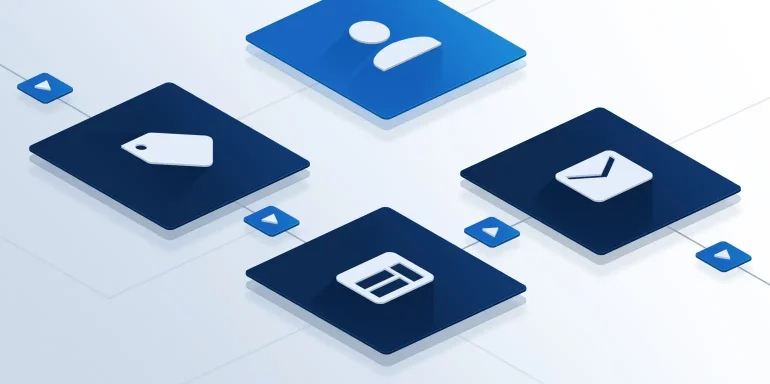.A marketer’s primary focus is to predict and influence customer behavior.
Every buyer persona you create, every ad you promote, every landing page you publish and every email you send out has one primary goal – persuading visitors to act while predicting and preparing for the action they are likely to take next.
This means that you need to know what motivates your visitors in the present and the future.
How do you do that?
Say hello to customer journey mapping.
What is customer journey mapping?
A customer journey map is a visual that helps marketers outline the story of a customer’s experience (from the first interaction with their business) to a long-term relationship, from the client’s point of view.
It can look something like this:
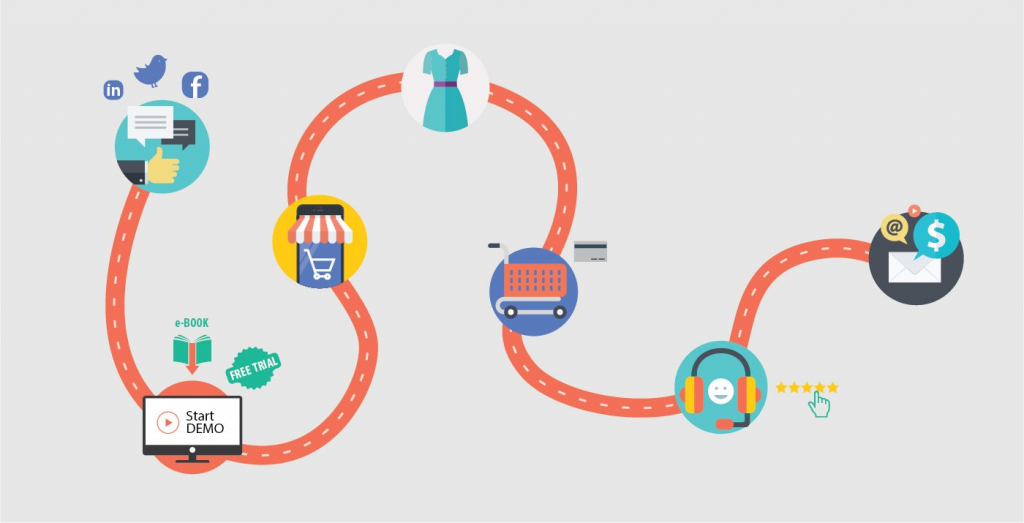
There are three main advantages of creating customer journey maps:
- Get valuable insights: Customer journey mapping gives you an insight into customers’ expectations of the brand at each step of their journey. This, in turn, helps you create customer experiences that motivate customers to reach the last point of the journey.
- Understand customer expectations: Creating customer journey maps allow you to understand the channels and touchpoints. Your customers are likely to take to get to your product, what expectations they have for your product and what their possible frustrations could be.
- Predict and influence consumer behavior: A detailed customer journey map informed by the right data helps. You predict and therefore change customer behavior which in turn optimizes the conversion process.
What it takes to create an optimized customer journey map, and what role do landing pages and content play in the customer journey stages is what we’ll be discussing next.
What are the components of a customer journey map?
You’ll need the following components to create an optimized customer journey map:
- Buyer personas: A buyer persona is a representation of your target customer based on detailed market research. It includes demographics such as age, gender, job title, etc. Each buyer persona has separate buying behavior. This is why you need to create a different customer journey map for each persona. The persona information you’ve already collected helps you map out a customized journey for that particular buyer persona.
- Customer stages: Before mapping out the customer journey you need to figure out the stages your customer goes through to come into contact with your brand. The customer steps are more commonly referred to as the marketing funnel. This customer acquisition model consisting of the following stages – awareness, consideration, decision, and retention.
- Understanding customer goals: You need to understand the goal your customers are trying to achieve at each customer stage. Collect data through surveys, interviews and customer service emails to figure out your customers’ goals. You can align them with the customer journey touchpoints.
- Identify touchpoints: Touchpoints are the interactions the customer has with your brand at each customer stage on specific web pages or ads. For example, awareness stage touchpoints are likely to include short-form landing pages, case studies, webinars and your blog, etc.
- Maintain a time frame: Because you’ll be using real data collected through customer analytics. Surveys and interviews you can maintain a realistic schedule as to when each customer stage should end. You should know how long your touchpoints take to convince customers to move to the next stage.
- Consider customer emotion: The client’s journey is told from the customer’s perspective. So, keeping into consideration which emotion (whether delight or frustration) your customer is likely to feel helps you ascertain if they will move from one stage to the other.
How to optimize customer stages for customer journey mapping
According to eMarketer, 55% of marketers aren’t confident in their company’s understanding of the customer journey:
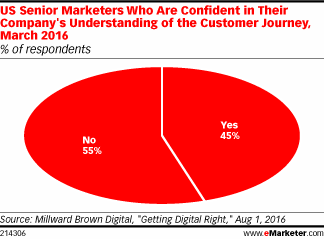
A lot of the lack of confidence stems from the fact that marketers believe that data is not being effectively used to map out optimized customer experiences at different stages of the customer journey.
So, how do you optimize customer stages for your customer journey map?
By putting the customer at the center stage, and giving them access to content that delights and satisfies them at every present stage, so they can easily move to the next stage.
Here’s an example of how a customer seamlessly moves from one customer stage touchpoint to another because of an optimized journey map:
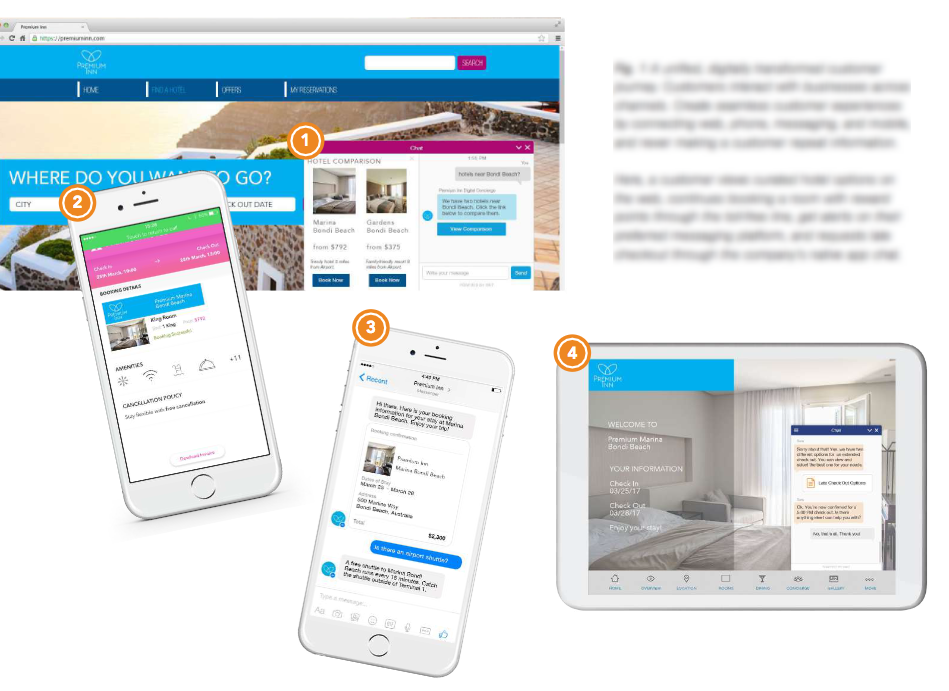
In the case the customer searches for curated hotel options on the web, continues booking a room with reward touchpoints through the toll-free line, then gets an alert on their preferred messaging platform and requests late room check out from the company’s native chat application.
To optimize your customer journey map, it is important you chalk out what content the customer will have access to each touchpoint. So they are encouraged to move onto the next touchpoint and finish their journey in the pre-determined timeframe.
Let’s take a look at the what type of content and landing pages you can use at each customer stage, and which touchpoints your customers are likely to interact with at each stage.
Stage 1: Awareness
This is the first stage of your customer journey. The recognition stage starts as soon as a customer becomes aware of the fact that they have a problem.
Customer research at this stage is purely educational. Now that they’ve become aware they have a problem they strive to find more about this issue. How it’s affecting their daily lives, their livelihood, etc.
The primary touchpoint involved at this stage is your search and display ads as customers are likely to search for their problems on search engines. They are also likely to ask questions on social media which will then trigger your relevant ads.
Pay particular attention to writing ad copy that satisfies the customer at the awareness stage. Use your targeting options wisely and create relevant ads for audiences that want to see your ad.
When adding keywords to your PPC strategy, think about user intent. A customer looking for a particular product will use different keywords than a customer who’s just browsing for more information.
A customer in the discovery phase will use keywords that center around the problem they’re facing. At this stage, you need to show customers ads that connect to landing pages that offer visitors the information they need to understand more about the problem and how they can go about solving it.
Awareness stage landing pages need to be short; they can include offers such as whitepapers, ebooks, webinars, etc. which the customer can get access to after they enter their contact details.
A Google search for the keywords ‘better social media management’ shows Marketo’s ad that offers users a free guide. This will inform them about best practices from industry leaders about social media management:
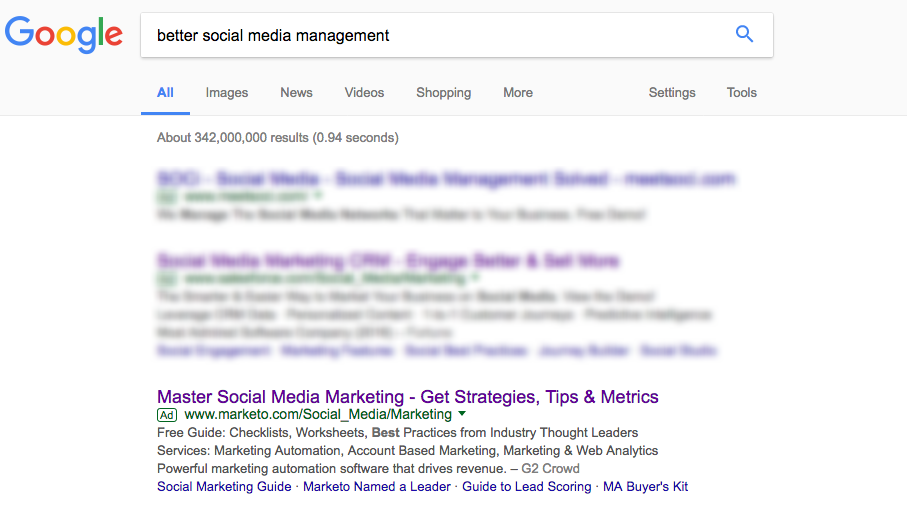
The landing page connected with the ad offers visitors a free guide in exchange for their contact details:
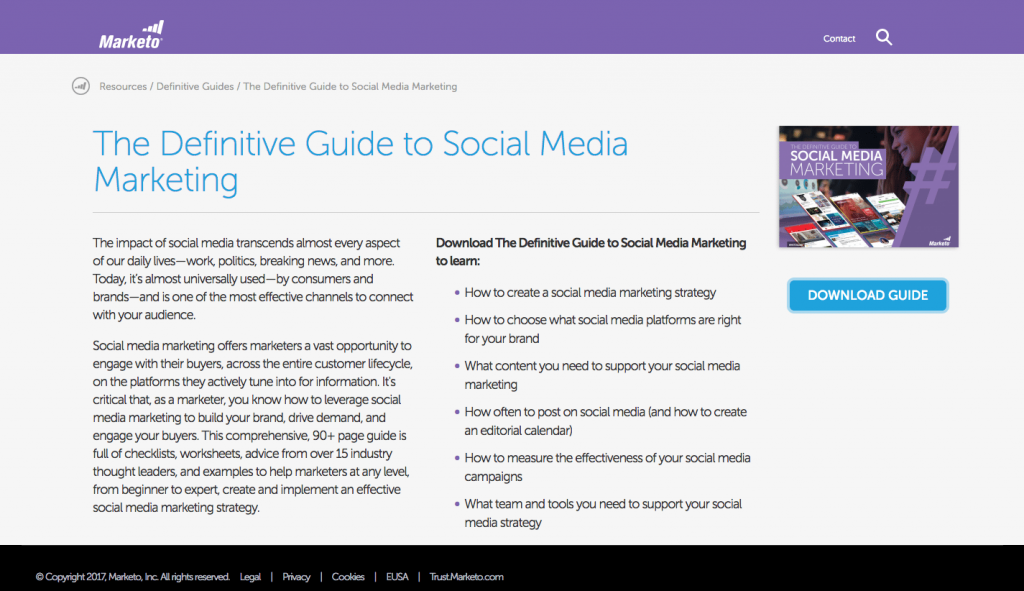
Only focus on the soft-sell at this stage, offer your customers a free resource first. Once you’ve warmed them up, you can then go in for the hard-sell.
Landing pages used at the awareness stage shouldn’t blatantly promote the product/solution. They should offer customers the necessary information they need to make an informed decision at the next stage of the journey.
For example, Instapage’s Copywriting for Conversion ebook is meant for customers that are having trouble creating landing pages with persuasive conversion copy. The ebook doesn’t promote Instapage as a landing page solution. Instead, it offers marketers a resource on creating conversion-worthy copy.
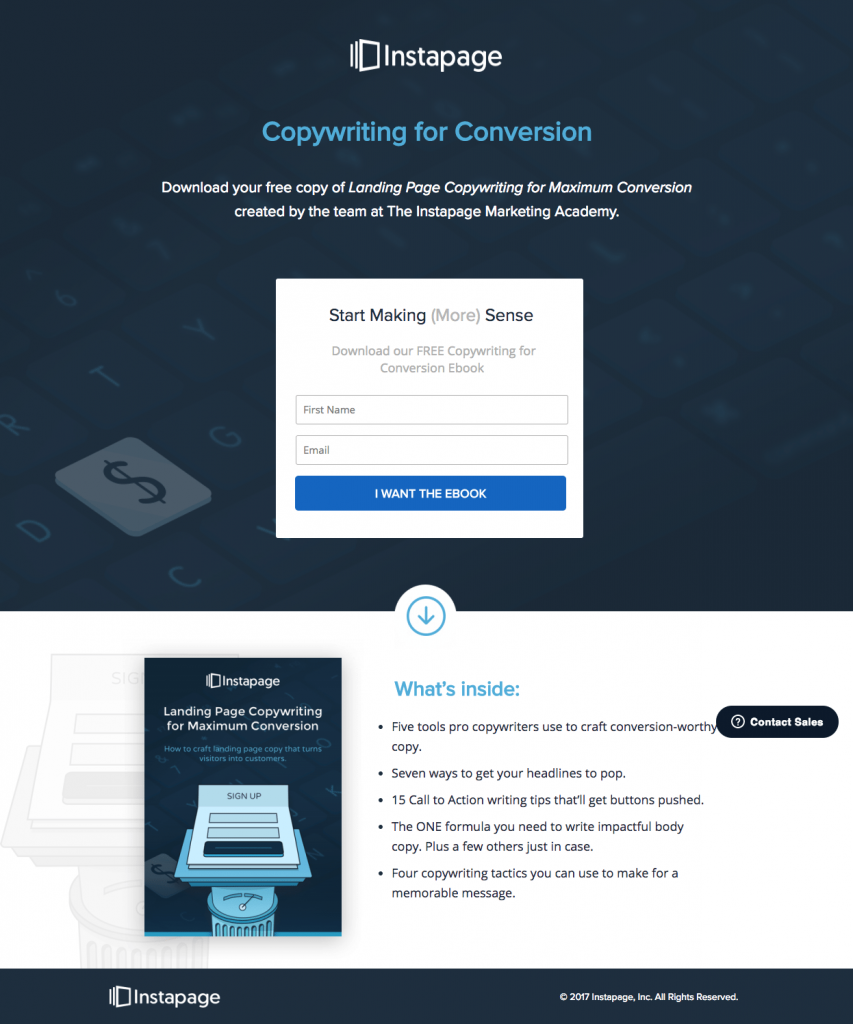
By telling customers how important conversion-worthy copy is for creating optimized landing pages and increasing conversions. The landing page sets the right precedent for when customers are ready to invest in a solution.
Use the awareness stage to inform customers about the consequences of the problem they’re facing. And how they can go about solving it.
Stage 2: Consideration and decision
In the first phase of the consideration and decision stage, the customer knows who you are and what solution you have to offer. However, they are still considering whether you are the right choice.
In this stage, the customer compares your solution to your competitors to find out which works best for them.
The primary touchpoints accessed at this stage are ads that directly promote the product your homepage, your product page and your pricing page.
Since you already have your customer’s email address from the awareness stage. You can use the channel to send them relevant emails that help them to get to know your product better and understand.
Uberflip can use Product webinars, case studies, tutorials and demo videos at this stage.
Uberflip uses email to inform clients of the consideration and decision stage about ‘The Content Experience’ conference that will assist customers write better content:
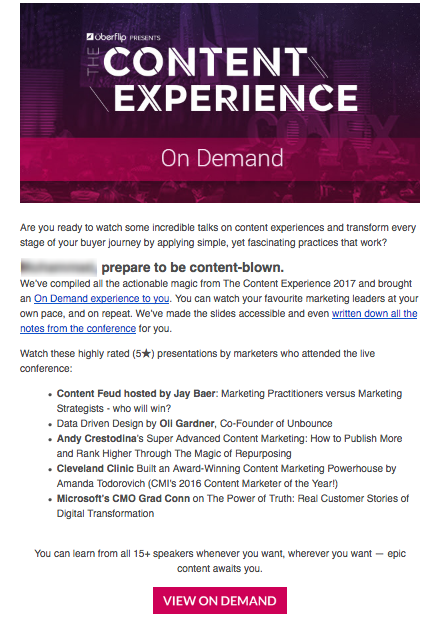
The email takes visitors to this landing page:
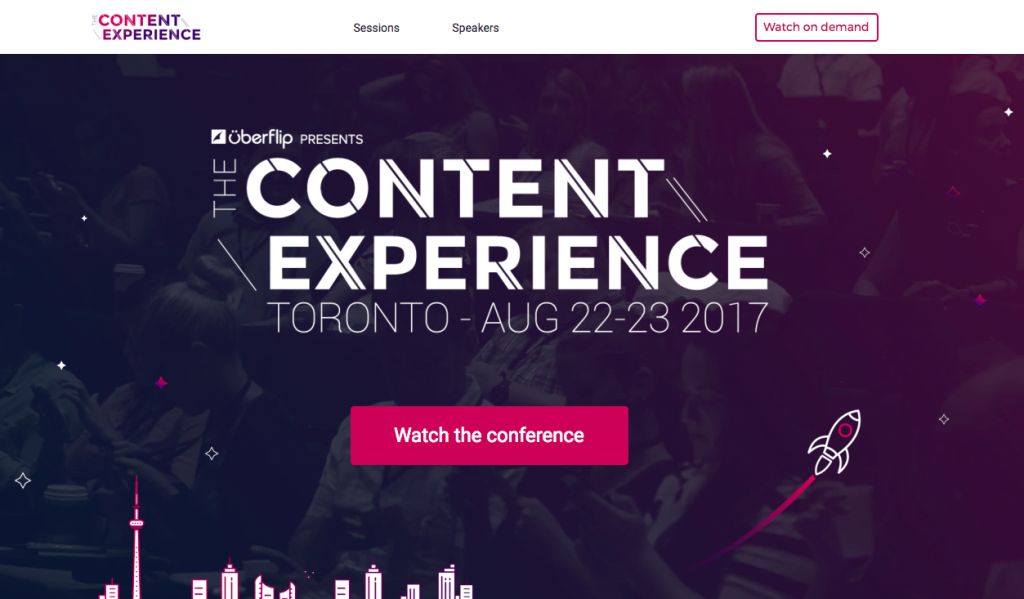
The offer lets customers know how well connected Uberflip is of the content marketing world and other MarTech companies which helps them differentiate them from their competition.
Free trial offers also work well at this stage. Because they offer customers a chance actually to see what your product can do.
Landing pages that promote free trials should talk about the unique features your product offers over the competition. They should also discuss the benefits customers are likely to get when they sign-up for your product.
Campaign monitor’s free trial landing page shows visitors a sneak peek of the product’s dashboard, showcases badges of prominent customers and features customer testimonials:
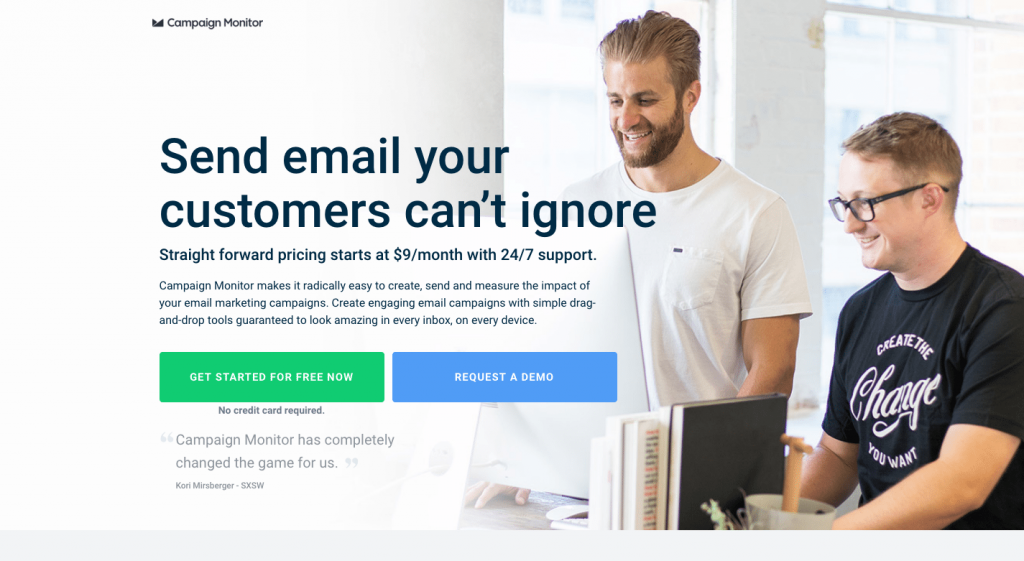
At the consideration and decision phase, you need to separate yourself from the competition. Make it clear to customers why you have the winning edge over the competition and why they should make a decision in your favor.
Stage 3: Conversion and retention
When customers reach the conversion and retention stage, they are almost ready to sign-up for your offer and convert.
What they need now is just a good nudge in the right direction. You can deliver this by providing them a free demo of the product or a private consultation.
Salesforce offers potential customers free demos to showcase why companies who use Salesforce increase their sales revenue, lead conversion and customer satisfaction:
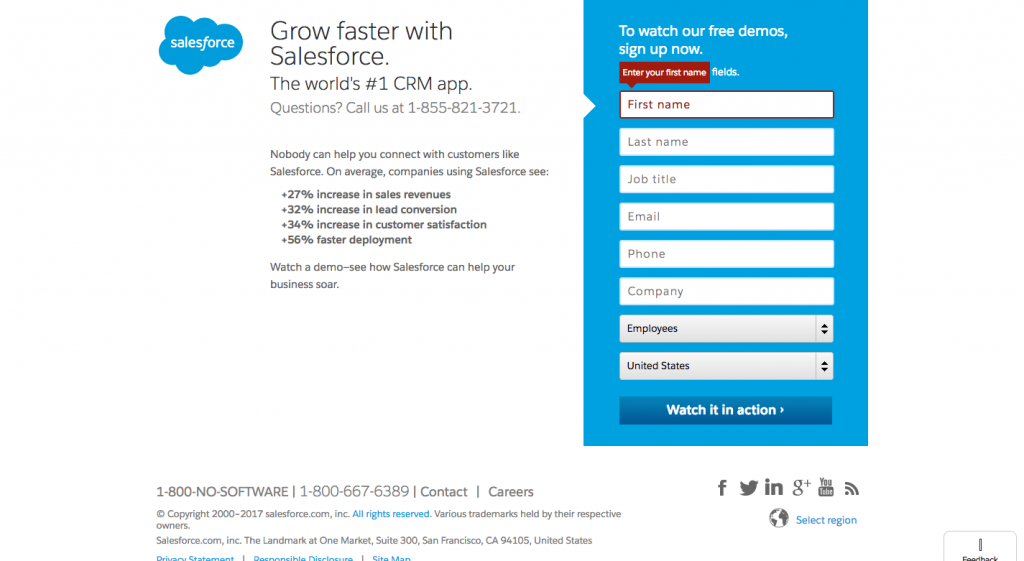
Once the customer passes through the conversion stage, the retention phase begins.
The retention stage unlike other steps in the client’s journey doesn’t have an endpoint. It is an on-going phase and lasts till the customer decides they no longer wish to remain your ‘customer.’
The primary touchpoints used in the retention stage are your support page, knowledge base, email, and blog.
Customer success plays a vital role in retention because it ensures that the customer succeeds in their journey. This involves user onboarding, maintaining a knowledge base, reducing churn rate and increasing revenue from upselling.
By effectively onboarding a customer you ensure that you guide your customers on how to properly use your product and solve the problem they intended to solve at the awareness stage.
You should respond to customer queries promptly at this stage. Let them know about the latest offers and promotions to make their experience with your product more worthwhile.
Instapage does this by keeping customers in the loop when a new feature releases:
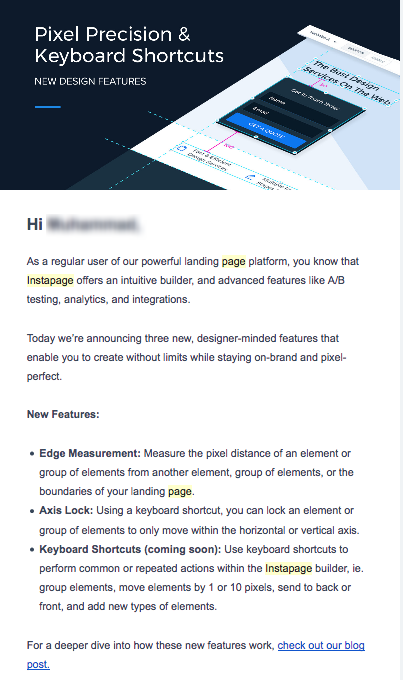
You can also use the retention phase of the journey to convince visitors to upgrade to a new pricing plan by letting them know all the features they’ll have access to.
You can use customer journey mapping tools such as Autopilot to map out the journey your customers are likely to take as they progress through the customer stages and get to know your product.
Solve the conversion puzzle with customer journey maps
Your customer is the most important piece of the conversion puzzle. Customer journey mapping allows you to put yourself in your customer’s shoes. This lets you visualize how they get to know your product. As they pass down from one phase of their journey to the next.
When you create meaningful experiences for your customers with the help of content and relevant landing pages. They are delighted and are motivated to move on to the next stage, and the loop keeps on going.
Landing pages are used to create meaningful experiences at every stage of the conversion journey. If you’re looking to build beautiful landing pages faster, sign up for an Instapage 14-day free trial today.

Try the world's most advanced landing page platform with a risk-free trial.
